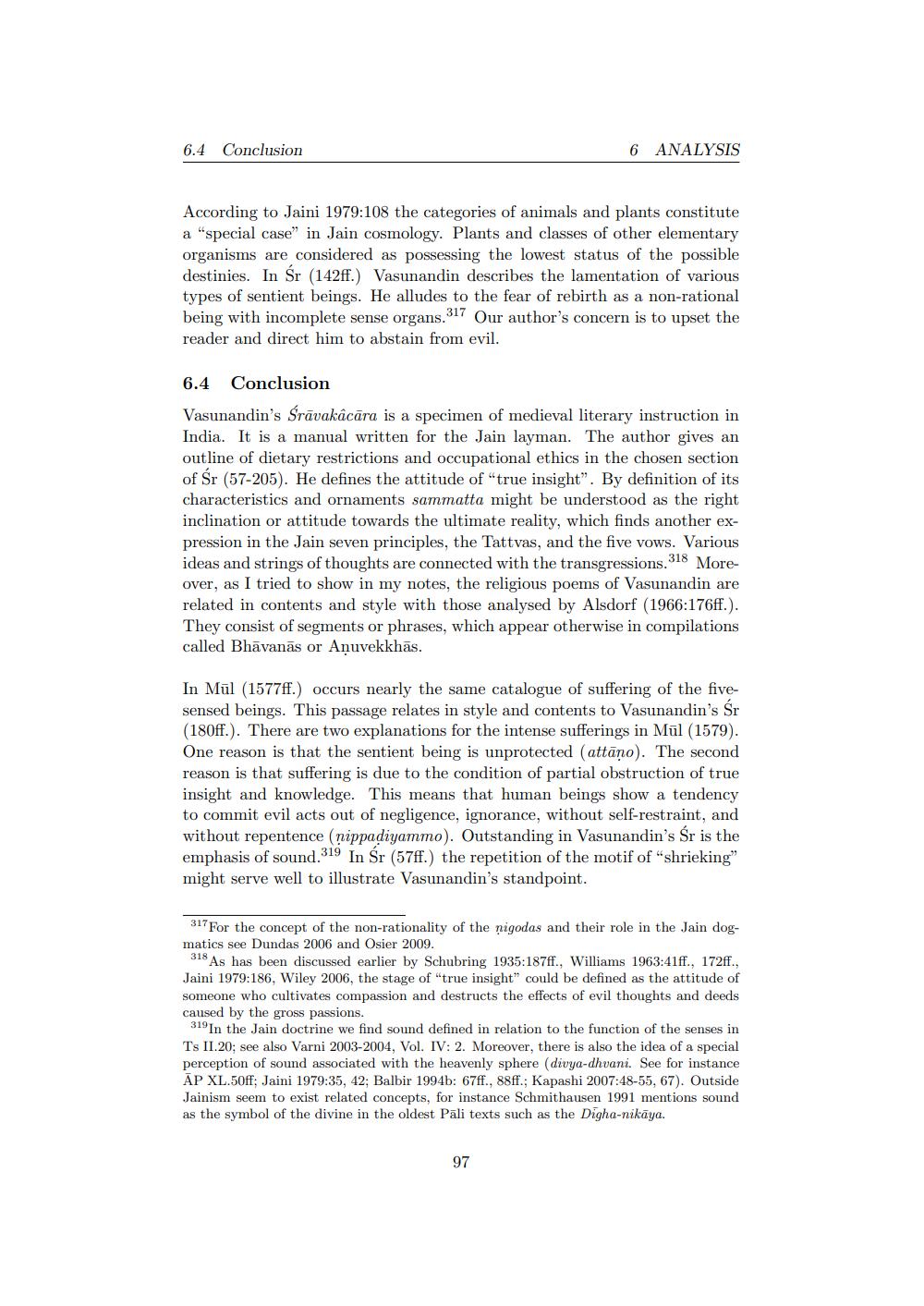________________
6.4
Conclusion
6 ANALYSIS
According to Jaini 1979:108 the categories of animals and plants constitute a "special case" in Jain cosmology. Plants and classes of other elementary organisms are considered as possessing the lowest status of the possible destinies. In Sr (142ff.) Vasunandin describes the lamentation of various types of sentient beings. He alludes to the fear of rebirth as a non-rational being with incomplete sense organs.317 Our author's concern is to upset the reader and direct him to abstain from evil.
6.4 Conclusion Vasunandin's Srāvakācāra is a specimen of medieval literary instruction in India. It is a manual written for the Jain layman. The author gives an outline of dietary restrictions and occupational ethics in the chosen section of Sr (57-205). He defines the attitude of "true insight”. By definition of its characteristics and ornaments sammatta might be understood as the right inclination or attitude towards the ultimate reality, which finds another expression in the Jain seven principles, the Tattvas, and the five vows. Various ideas and strings of thoughts are connected with the transgressions.318 Moreover, as I tried to show in my notes, the religious poems of Vasunandin are related in contents and style with those analysed by Alsdorf (1966:176ff.). They consist of segments or phrases, which appear otherwise in compilations called Bhāvanās or Anuvekkhās.
In Mül (1577ff.) occurs nearly the same catalogue of suffering of the fivesensed beings. This passage relates in style and contents to Vasunandin's Sr (180ff.). There are two explanations for the intense sufferings in Mül (1579). One reason is that the sentient being is unprotected (attāno). The second reason is that suffering is due to the condition of partial obstruction of true insight and knowledge. This means that human beings show a tendency to commit evil acts out of negligence, ignorance, without self-restraint, and without repentence (nippadiyammo). Outstanding in Vasunandin's Śr is the emphasis of sound.319 In Sr (57ff.) the repetition of the motif of "shrieking" might serve well to illustrate Vasunandin's standpoint.
317 For the concept of the non-rationality of the nigodas and their role in the Jain dogmatics see Dundas 2006 and Osier 2009.
318 As has been discussed earlier by Schubring 1935:187ff., Williams 1963:41ff., 172ff., Jaini 1979:186, Wiley 2006, the stage of "true insight" could be defined as the attitude of someone who cultivates compassion and destructs the effects of evil thoughts and deeds caused by the gross passions.
319 In the Jain doctrine we find sound defined in relation to the function of the senses in Ts II.20; see also Varni 2003-2004, Vol. IV: 2. Moreover, there is also the idea of a special perception of sound associated with the heavenly sphere (divya-dhvani. See for instance AP XL.50ff; Jaini 1979:35, 42; Balbir 1994b: 67ff., 88ff.; Kapashi 2007:48-55, 67). Outside Jainism seem to exist related concepts, for instance Schmithausen 1991 mentions sound as the symbol of the divine in the oldest Pāli texts such as the Digha-nikāya.
97




